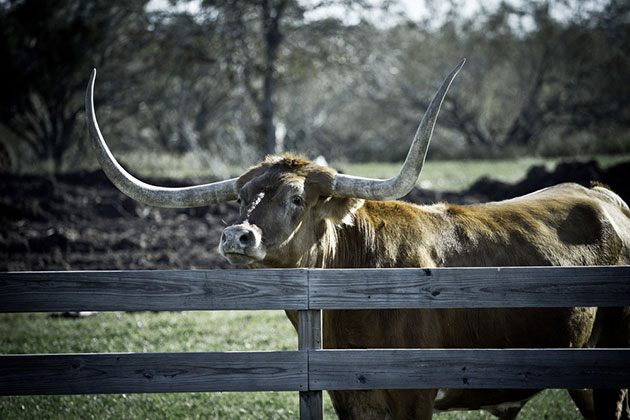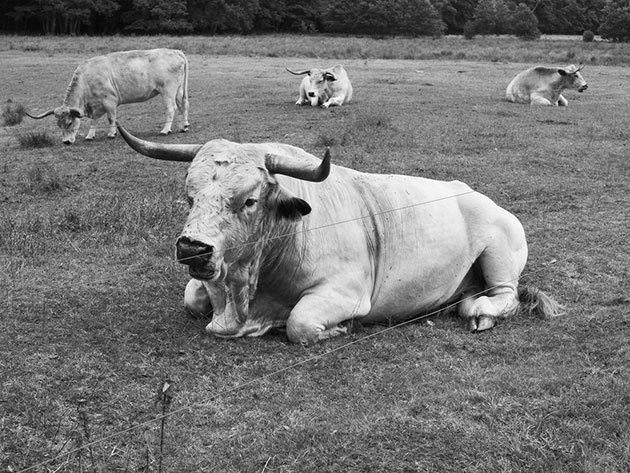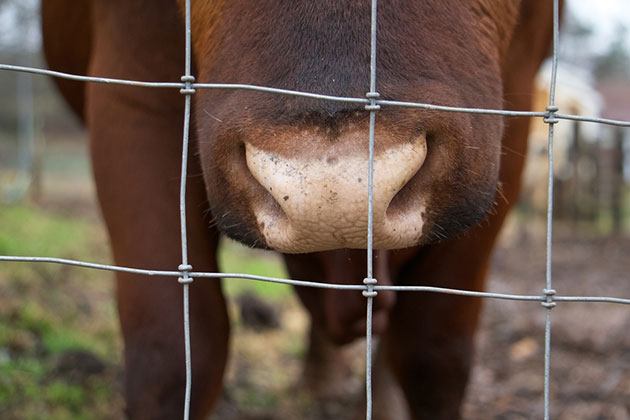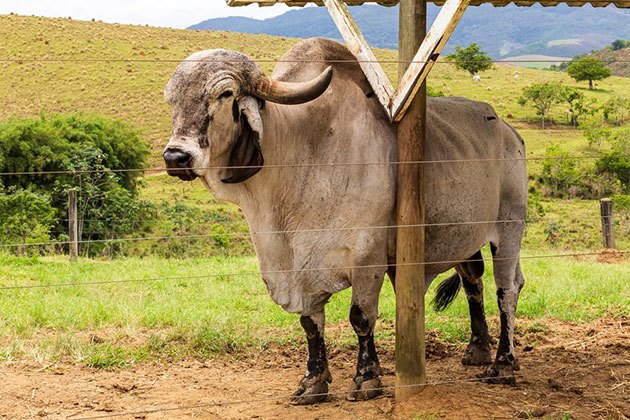As bulls are among the most vigorous and most aggressive animals, they can effortlessly escape the electrified area, especially if other animals, such as cows, are present.
How can you keep them confined and prevent escaping? What successful ways to enclose and tame these giant animals on your land?
You can use a high-tensile electric fence for keeping bulls inside the confined property.
But, first, you must take other options, such as security measures and safety precautions for the livestock.
Finally, you can decide if electric fences for bulls are effective and how.
Taking safety features

Bulls are animals with extraordinary strength. They weigh between 1,100 and 2,200 pounds.
When you add aggressiveness and unpredictability as their main features, you must consider your security at a high level.
They’re furious as dairy breeds compared to beef cattle. The former gets more reactive as they age. Sometimes, they can attack even without provocation.
However, other types of beef cattle might be violent and ferocious during the breeding age.
As the livestock can act rashly and out of the blue, you can suffer from severe injuries, even if you take all safety precautions and other measures.
So, how can you protect yourself? Here are some of the safety steps:
- Never handle alone – Never act independently with a bull. Always work with your backup to quickly act if something goes wrong.
- Keep a proper distance – stay away from the animals, and if you notice changes in behavior, quickly move if threatened.
- Separate furious bulls – if you have a bull more aggressive than the rest of the herd, keep it away from the others. Generally, you should not keep a bull if it is over two years old.
- Be aware – Be cautious & always remember where the bulls are. Also, please pay attention to their actions when moving to their area.
If you irritate the animal, it will threaten you, turn sideways and show its more extensive profile with the arched back.
It will also lower its head and shake it from side to side.
Other signs of ferocity include lowered head, hunched shoulders, and paws on the ground with the front legs.
In addition, the bull is highly motivated by breeding. So, when cows are in heat, they will try to approach, escape the confined areas, and be more ferocious than average.
Therefore, it would help if you planned the breeding season accordingly to avoid higher risks.
Electric fence for cattle and bulls: Effective or not?

Before the final decision and the installation of the electric fence, you must consider the best solution and a few factors.
It would help to consider how expensive the maintenance, the following equipment, and the installation are.
You might find one-time costs when installing the electric fence for cattle for the first time.
Yet, you might need to change the whole construction after wear and tear and install the electric fencing for cattle again.
What are the best solutions?
Bulls need more electric fencing than other livestock animals. The electric fencing will condition and train them with a harmless shock.
So, the best electric fencing must be taller and sturdier to handle the aggressive bull.
The high-tensile fence must be at least 49 inches high to prevent the bull from attacking and escaping.
A good fence must also have sufficient voltage levels to contain the bull.
For example, the high tensile wire fence must maintain between 3,000 and 4,000 volts on the fence line.
It allows enough voltage power supplies through the wires even when dealing with wet grass and brush, during summer and winter when you need less or more voltage supplies.
However, depending on the vegetation surrounding the fencing and the size of the lines, the best solution is a low-impedance fence charger.
You can find them here or pick Gallagher as the best option.
The more aggressive the cattle, the more maintenance and fence wires you need to contain the animal. A standard electric fence might not be enough.
For this reason, you need five or six high-tensile wires when installing electricity into your fencing.
In addition, you must separate the aggressors from other cattle animals by using more reliable fence posts, ground rods, thicker gauge electric wire, and overall more robust fencing.
Traditionally, barbed and woven wire fences have been the most effective for these animals. But, the barbed wire is harmful to animals in closer contact with it.
Also, the barbed wire fencing has a short lifespan, requiring increased care.
Maybe not that economical, but more effective than the barbed-wire fence is the woven wire fence.
When you modify them above the top wire, the fencing will be more productive as a physical barrier and a psychological barrier.
The minimum fence height the bulls and calves require is 39 inches.
Nowadays, for a high-tensile fence, you need the best wire too. So, you can pick the Zareba model or find similar units on Amazon.
You can use these models for interior and perimeter fences.
What are the best standards?

The fence for bulls and cattle centers around two main features: fence charger and fence wires.
Ensure the voltage levels are between 2,000 and 3,000 on the line for the chargers. Then, you can go for the Zareba model to meet your standards.
Also, don’t forget that battery and solar-power charges are ideal for remote areas with no AC power. But, to keep predators away, you need 5,000 volts of charger power.
Regarding wires, the exact number varies from one to six wires, depending on the following factors:
- use of rotational grazing
- deterring predators
- working with cattle in enclosed areas
- fence life
- cattle size
You will need four or five ground rods around ten inches apart, with a minimum height of 54 inches for a perimeter fence. The bottom wire must be at least twelve inches above the ground.
Electrify two or three strands for your livestock, but you must electrify more wires for bulls and cattle.
A two or three-wire system is recommended for rotational grazing with T-posts. The equipment must be installed correctly, and the wire space must be at least ten inches.
The bottom wire is around 20 inches from the ground, and the wholesome structure is 40 inches tall.
For a feedlot, you need five strands of the wire system, ten inches apart.
The bottom wire is twelve inches above the ground, and the overall height is a minimum of 52 inches.
Considering handling facilities, such as heavy wire fences or wood fences are the best equipment. Electric fences are not an option.
The height of the fences must be at least 60 inches. Also, the visibility of fences is crucial to encourage the movement of livestock.
Remember that a correct wire spacing – a hot wire at the animal’s shoulder height is essential for a successful enclosure.
FAQs
What is the best fencing for bulls?

The best one is the fence with 3,000 or 4,000 voltage power, at least 49 inches tall, with five or six wire lines.
Of course, you must install it correctly, so the animals cannot push or pull it to escape.
Will an electric fence keep cattle in?
Yes, it will transfer power from the starting to the final point, sending the shocking pulses and keeping the cattle inside the constructions.
How many joules does a cattle fence need?
According to Gerrish, one joule of output per mile is enough, regardless of the wire strands. So, for six miles of fence, you need a six-joule energizer.
Final words
The end, folks!
I hope you found more exciting facts regarding the fences for bulls and their productivity.
With your tricks, you can always increase their performance, such as using galvanized materials for no rust, posting a solar panel at high noon, prolonging battery life, etc.
Most vitally – ensure you install and maintain the electric fence for bulls correctly to prevent accidents.


